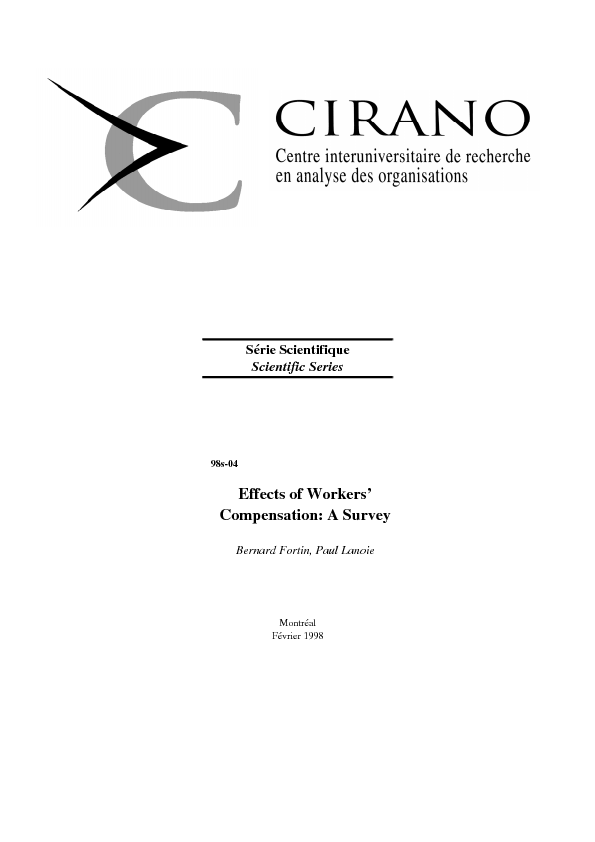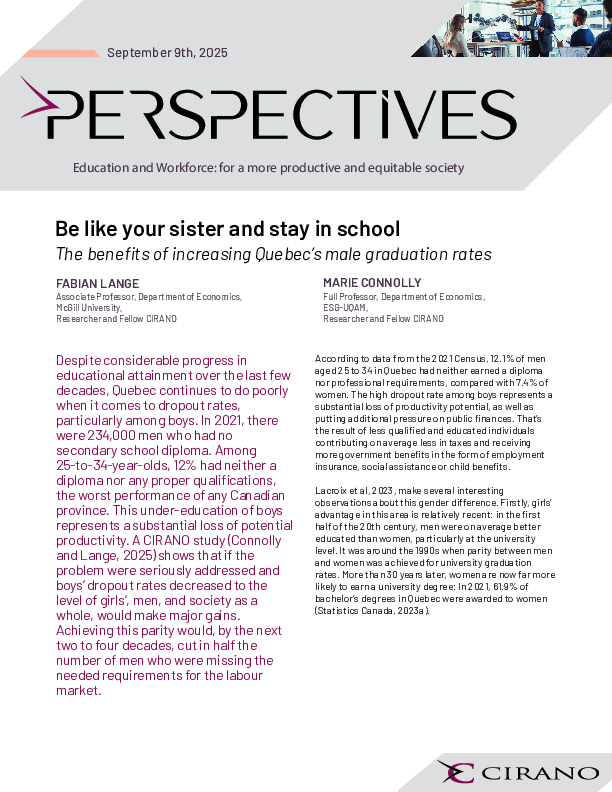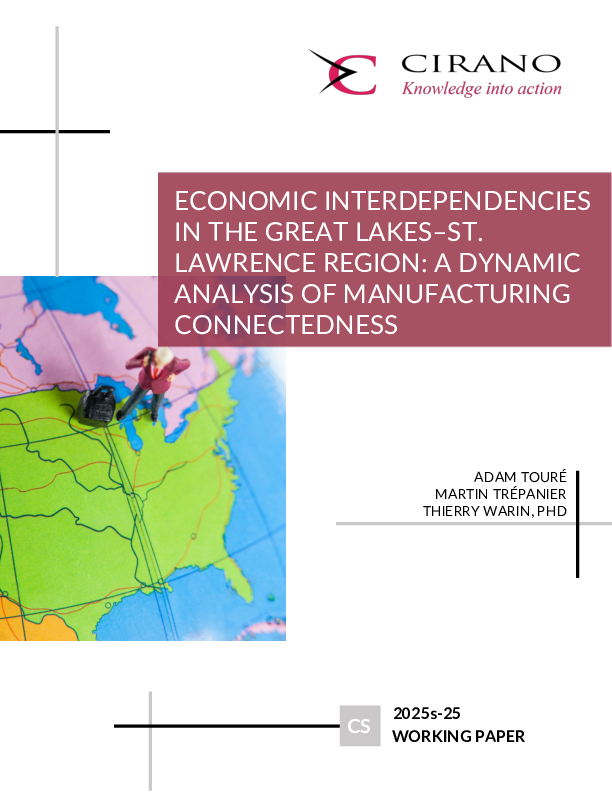Effects of Workers' Compensation: A Survey
This survey covers extensively the theoretical and the empirical work that was done on the incentive effects related to the existence of workers' compensation (WC) in the North American context. It first analyzes the economic rationale for compulsory WC. Then it studies the impact of WC on behavior. Three types of effects can be distinguished: 1) WC may influence frequency, duration and nature of claims through a variety of incentive effects. Under asymmetrical information about accident prevention activities, WC may affect safety behavior of both employers and employees and the risk level in the market place. Under asymmetrical information about the true nature of workplace injuries, insured workers may attempt to report false or off-the-job accidents and to undertake activities in order to obtain higher WC benefits, especially in the case of hard-to-diagnose injuries. Moreover, substitution between WC and other insurance programs may be observed. The decision of reporting a workplace accident may also be affected by the generosity of WC benefits. 2) WC may induce changes in occupational wages rates and 3) WC may affect firms' productivity. So far, the literature has focused0501nly on the first type of effects. The0501n results show that increases in WC insurance are associated with an increase in the frequency of injuries (elasticities ranging from 0.4 to 1), and with an increase in the average duration of claims (elasticities ranging from 0.2 to 0.5). Furthermore, increases in WC are associated with more reporting of injuries that are hard-to-diagnose and, in the same line, there are some evidence (at least in Canada) of substitution between unemployment insurance and WC insurance. Lastly, there are empirical results showing that the presence of WC insurance induces important reductions in wage rates, while an emerging literature suggests that changes in WC insurance may also have negative productivity effects.
[ - ]




